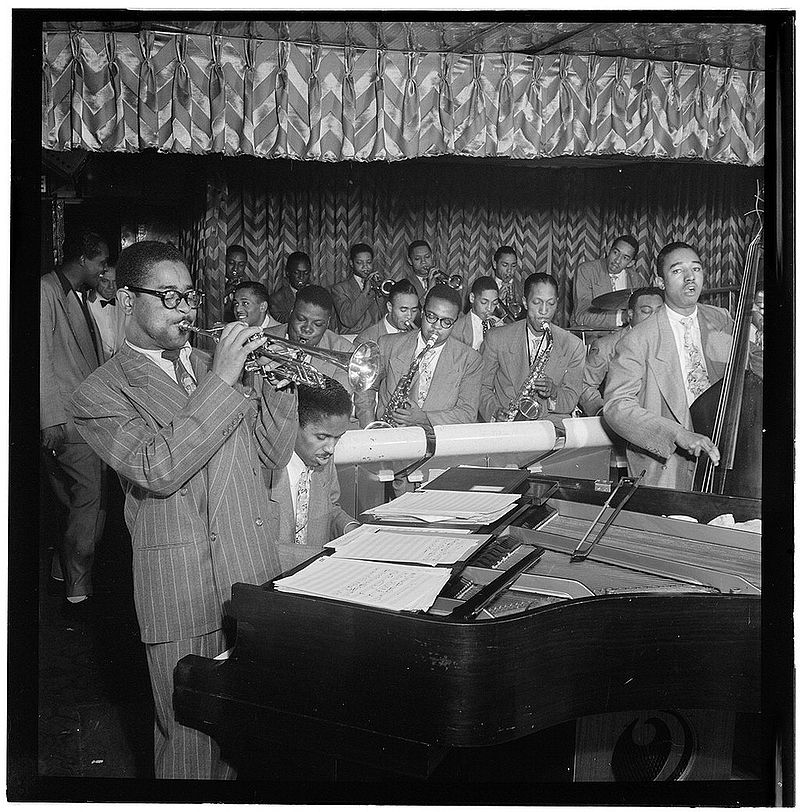
Bebop (Bop) 9
Despite this key characteristics of bebop described in this lesson, individual bebop performance styles vary considerably. These include the melodic lyricism of Gillespie, Parker, Powell, and the scat vocalizing of Ella Fitzgerald; the more dissonant, disjunct approach of Thelonious Monk; the understated melodic phrasing of the young Miles Davis; and the highly interactive drum approaches of Kenny Clarke and Max Roach.
Several big bands emerged embodying the new bebop language, such as Gillespie's big band of the late 1940s and 1950s and Billy Eckstine's band (which featured many young bebop figures). Here is an example of Eckstine's band and his scatting technique in the song "Rhythm is a Riff".

Billy ECKSTINE & His Orchestra " Rhythm In A Riff " !!! [ 00:00-00:00 ]
By the late 1950s, many of the remaining big bands incorporated bebop phrasing and harmonies into their arranging and improvisational styles. In addition, several bebop musicians also began incorporating Afro-Cuban rhythms. Sometimes called "Cubop," prominent examples include Powell's "Un Poco Loco" and Gillespie's collaborations with Cuban conguero Chano Pozo (for example, "Manteca" and "Cubana Be Cubana Bop" . We can hear these traits as early as Gillespie's and Parker's 1945 version of "A Night in Tunisia", a song that incorporates an Afro-Cuban drum rhythm.

A Night In Tunisia - Dizzy Gillespie and Charlie Parker at 1945 Concert [ 00:00-00:00 ]
In summary, since the 1940s, bebop has had a profound influence-direct and indirect-on almost all subsequent jazz styles. Moreover, during the 1950s and 1960s, a new generation of jazz musicians identified with bebop and took its earlier styles into creative, previously unexplored directions.
The continued influence of bebop and its various transformations suggests that it will remain an essential historical thread in the development of jazz. Although more commercial forms of jazz emerged in the late twentieth century, such as smooth jazz, bebop remained the most vital point of reference for new musical directions. Furthermore, as both an aesthetic model and a practical compendium of musical style, it has consistently commanded the attention of many young jazz players.
Heebie Jeebies
Say, I've got the Heebies
I mean the Jeebies
Talking about
The dance, the Heebie Jeebies
Do, because they're boys
Because it pleases me to be joy
Boogie Woogie Bugle Boy
He was a famous trumpet man from out Chicago way
He had a boogie style that no one else could play
He was the top man at his craft
But then his number came up and he was gone with the draft
He's in the army now, a blowin' reveille
He's the boogie woogie bugle boy of Company B






